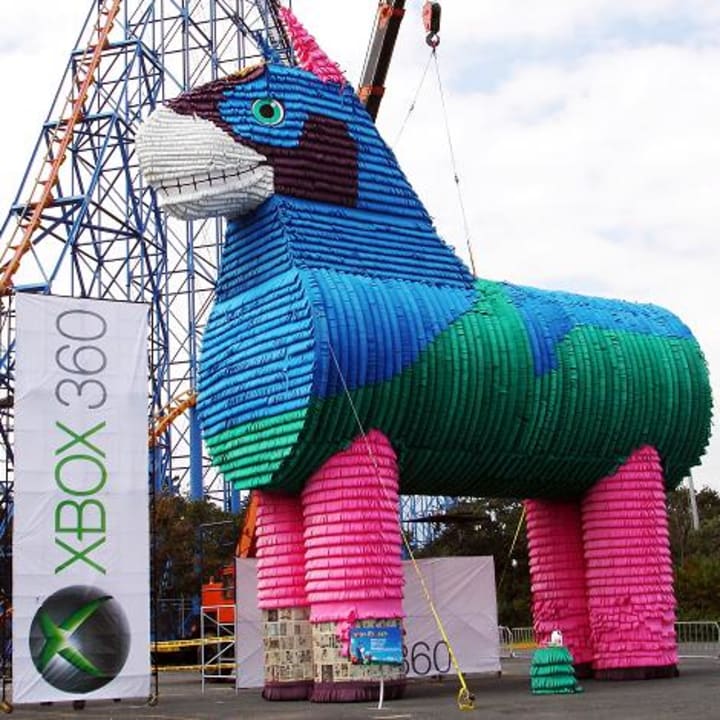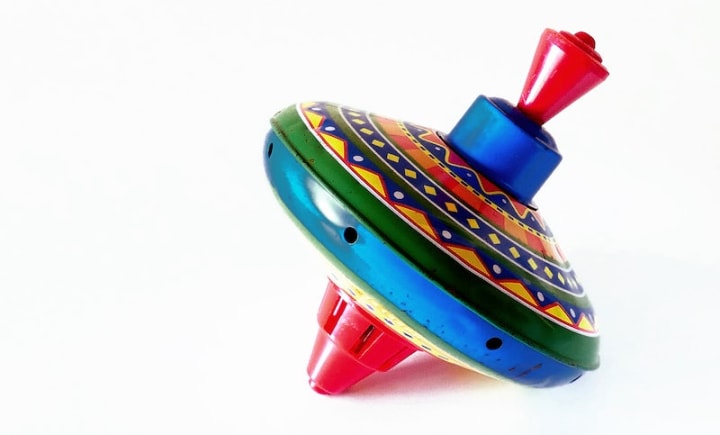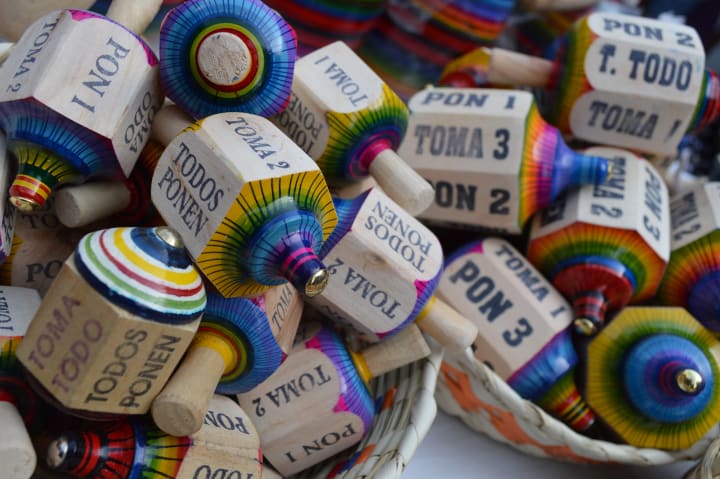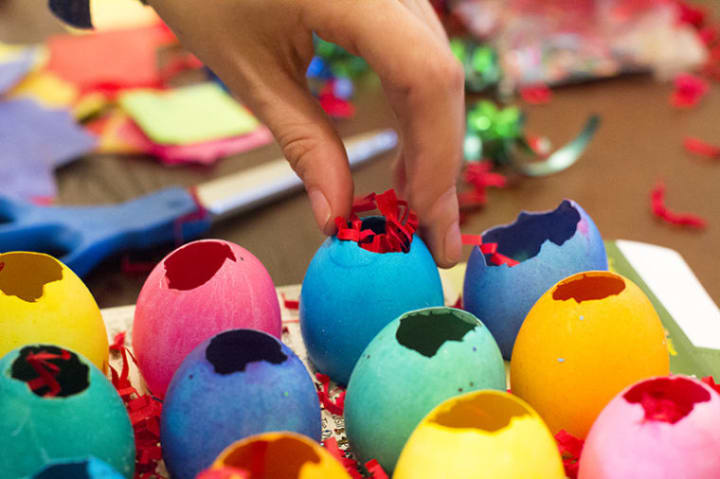
Mexico is a country with a rich cultural heritage and history that spans over thousands of years. From the Aztec and Mayan civilizations to the Spanish colonial period, Mexico has seen a diverse range of influences that have shaped its identity and traditions. One of the most enduring and beloved aspects of Mexican culture is its traditional games. These games have been passed down through generations and are still played by children and adults alike. In this article, we will explore 10 traditional Mexican games, their rules, instructions, history, and cultural significance.
Game 1: Loteria

Loteria is a popular game played throughout Mexico and Latin America. It is similar to bingo but uses images on a deck of cards instead of numbers. The deck contains 54 cards, each with a different image, such as a mermaid, a skull, a flower, or a rooster. The game is typically played with a group of people, and each player has a game board with a grid of images that match the cards in the deck.
The objective of the game is to match the images on the cards with the images on the game board. The first player to match all of their images and shout "Loteria!" wins the game. The game can also be played with a twist, where players have to match specific patterns or lines on their game board.
Loteria has a long and rich history, dating back to the 18th century. It was initially played by the Spanish aristocracy and was later adopted by the common people. Today, it is an essential part of Mexican culture and is often played during celebrations, such as the Day of the Dead or Mexican Independence Day.
Game 2: Piñata

Piñata is perhaps one of the most well-known and beloved traditional Mexican games. It is a game that is played at parties and events and involves a colorful and festive piñata, a decorated container that is filled with candy, fruits, and small toys. The piñata is suspended from a rope or string, and players take turns trying to break it open with a stick while blindfolded.
The objective of the game is to break open the piñata and collect as much candy and toys as possible. Players are blindfolded to add an extra level of excitement and challenge to the game.
The history of the piñata can be traced back to ancient China, where it was used in religious ceremonies. The piñata was later adopted by the Spanish and brought to Mexico, where it became a popular game played during religious festivals and other celebrations.
Today, the piñata remains an essential part of Mexican culture and is often seen at birthday parties, weddings, and other festive events.
Top 10 cheapest cars in the world: You will be amazed
Game 3: Trompo

Trompo is a spinning top game that is popular among children and adults in Mexico. The game involves a wooden top with a pointed tip that is spun by wrapping a string around it and pulling it quickly. The objective of the game is to keep the top spinning for as long as possible and perform tricks, such as catching the top on the string or balancing it on the hand.
Trompo has a long and rich history in Mexico, dating back to the pre-Columbian era. The game was initially played by the Aztecs, who used tops made from seeds and feathers. Over time, the game evolved and was adopted by the Spanish, who introduced wooden tops with metal points.
Today, trompo remains a popular game in Mexico, and competitions are often held to determine who can spin the top the longest or perform the most impressive tricks.
Game 4: Toma Todo

Toma Todo, also known as "Take Everything," is a fast-paced card game that is played with a group of people. The game involves a deck of cards with different symbols and colors, and players take turns drawing cards and placing them on a pile in the center. The objective of the game is to be the first player to get rid of all their cards.
The rules of Toma Todo are simple. Each player starts with a hand of cards, and the remaining cards are placed face down in a pile. On each turn, players draw a card from the pile and must either match the color or symbol of the card on top of the pile. If they cannot, they must add their card to the pile, and the next player takes their turn. If a player draws a special card, such as a "wild" card, they can change the color or symbol and force the next player to draw extra cards.
Toma Todo has a long history in Mexico and is believed to have originated in the southern state of Oaxaca. The game is often played at family gatherings and other social events, and its fast-paced nature makes it a favorite among younger generations.
Game 5: Calaveritas

Calaveritas, also known as "Little Skulls," is a traditional game played during the Day of the Dead celebrations in Mexico. The game involves small clay or sugar skulls that are decorated with colorful icing and other decorations. The skulls are arranged on a table, and players take turns trying to knock them down with small balls.
The objective of the game is to knock down as many skulls as possible with the fewest number of balls. The game can be played with different levels of difficulty, such as changing the distance between the player and the skulls or using smaller balls.
Calaveritas has a deep cultural significance in Mexico and is often seen as a way to honor and remember loved ones who have passed away. The Day of the Dead celebrations are an essential part of Mexican culture and are recognized as a UNESCO Intangible Cultural Heritage of Humanity.
Game 6: Cascarones

Cascarones, also known as confetti eggs, are a popular game played during Easter and other festive events in Mexico. The game involves hollowed-out eggs that are filled with confetti or small toys and sealed with colored tissue paper. Players take turns cracking the eggs over each other's heads, releasing the confetti and toys.
The objective of the game is to crack as many eggs as possible over other players' heads without getting hit yourself. The game can be played with different levels of difficulty, such as using larger or smaller eggs or adding obstacles.
Cascarones have a long history in Mexico and are believed to have originated in China. The game was later adopted by the Spanish and brought to Mexico, where it became a popular Easter tradition. Today, cascarones are an essential part of Mexican culture and are often seen at Easter parades and other festive events.
Game 7: Juego de la Oca

Juego de la Oca, also known as the Game of the Goose, is a traditional board game that is popular in Mexico and other Latin American countries. The game involves a board with a spiral of spaces that players must move along by rolling dice. Each space has a different action, such as moving forward or backward, or skipping turns.
The objective of the game is to be the first player to reach the end of the board. The game can be played with different variations, such as adding additional actions or changing the number of dice.
Juego de la Oca has a long history in Europe and was later introduced to Mexico during the Spanish colonial period. Today, it remains a popular game among children and adults, and its simple yet engaging gameplay makes it a great way to pass the time with family and friends.
Conclusion
Traditional Mexican games offer a unique glimpse into the country's rich cultural heritage. From Aztec ball games to modern board games, these games have been enjoyed by generations of Mexicans and continue to be popular today.
Playing traditional Mexican games is not only fun, but it also provides an opportunity to learn more about Mexican culture and history. Whether you're in Mexico or somewhere else in the world, try playing one of these games with family and friends, and experience the joy and excitement that they bring.
More read on:
The Ultimate Guide to Buying a Trampoline
About the Creator
Shiju
Identify your quality and Inspire others






Comments
There are no comments for this story
Be the first to respond and start the conversation.